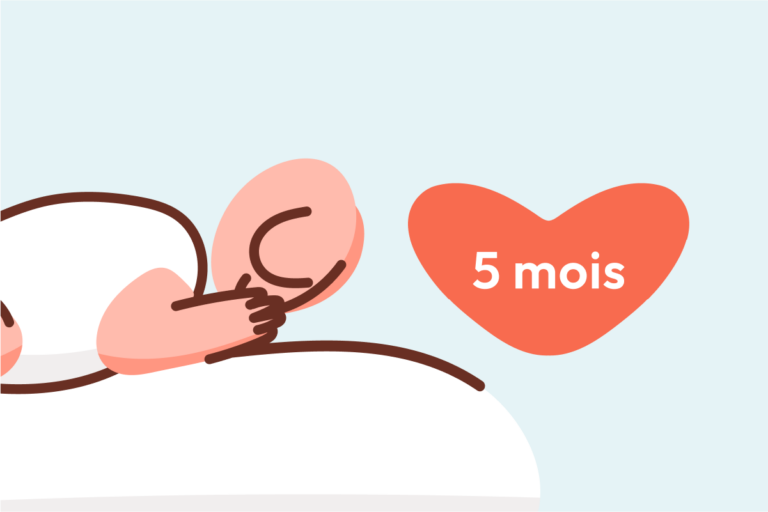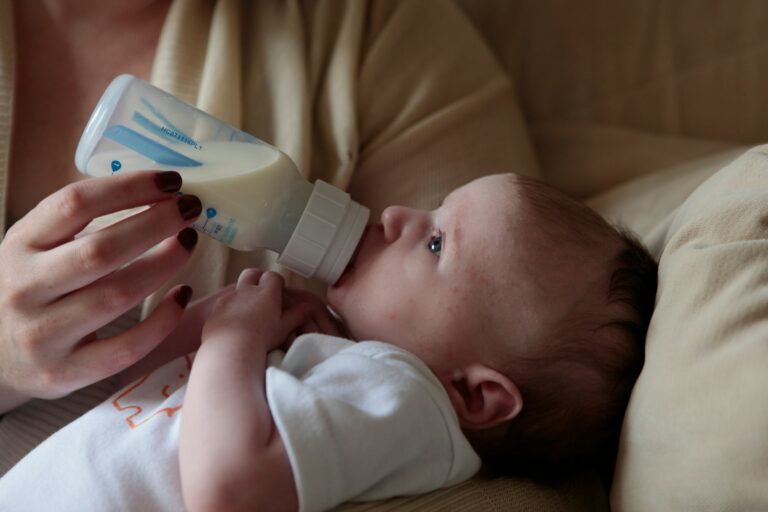The gentle hush of a nursery in the evening, soft shadows stretching over a crib, and parents quietly hoping for restorative sleep—these scenes play out everywhere. Yet, behind every yawn and midnight awakening, there’s a bigger question at hand: How do babies learn to fall asleep on their own? The concept of baby self-soothing is a profound turning point. It often sparks concern: Is my child ready to self-soothe? Am I missing signs? At what age does this ability blossom? Parents searching for restful nights and resilient little ones crave answers grounded in science, empathy, and practical wisdom. Below, discover the real mechanisms behind baby self-soothing, learn why it matters medically and emotionally, and find evidence-based ways to encourage this milestone, all while honoring your family’s values and your baby’s unique temperament.
What Is Baby Self-Soothing? Foundations and Science Explained
Baby self-soothing—a phrase loaded with hope for weary parents—describes a baby’s ability to regulate their own emotional state and transition from wakefulness to sleep without being rocked, cuddled, or fed. This emerging skill, linked to the maturation of the central nervous system, typically appears between three and six months of age. Infants may suck their thumb, stare quietly into space, or grasp a favorite sleep object as early expressions of this remarkable adaptation. What’s happening beneath the surface? As the baby’s circadian rhythm (the body’s internal clock) and sleep architecture evolve, brief periods of wakefulness during the night become normal. Those nighttime arousals, once thought to signal distress, may actually be opportunities for self-settling. The process is subtle: brainwave patterns shift, melatonin secretion adjusts, and with time, the transitions between sleep cycles become smoother.
Importantly, self-soothing is not about leaving a baby to “cry it out” unassisted. Instead, it is the gradual acquisition of calming strategies, supported by a responsive caregiver who can distinguish between genuine distress and the more transient fussing that marks self-regulation in progress.
Why Baby Self-Soothing Matters—For Babies and for Parents
Imagine a clock that resets gently every night—this is the ideal when baby self-soothing skills begin to blossom. Babies capable of returning to sleep independently often sleep longer stretches, leading to regular, consolidated sleep patterns and fewer awakenings. For caregivers, this can mean reclaimed rest and reduced parental stress. On a deeper level, the benefits expand beyond sleep: babies who self-soothe develop early emotional regulation skills, building the foundation for future resiliency and autonomy.
But real-life parenting is rarely one-size-fits-all. Some infants embrace new routines with gusto; others protest with every fiber of their being. Families with infants who require constant comforting may feel at odds with advice to encourage independence. It’s essential to acknowledge these diverse experiences and offer tailored strategies—without defaulting to rigid expectations.
Setting the Stage: The Sleep Environment and Routine
Creating a Nurturing Setting for Self-Soothing
A tranquil nursery isn’t just a visual delight—it’s a biological cue. Research shows that a sleep environment maintained at a cool, stable temperature (about 66-68°F or 19-20°C), free of excessive light, and buffered by white noise can down-regulate the baby’s arousal system. Subdued colors, soft textures, and gentle background hums lull the senses, creating optimal conditions for baby self-soothing to unfold.
Structuring an Effective Bedtime Routine
Routine is more than a comfort; it is a signal to the baby’s neurobiological pathways that sleep is imminent. A sequence involving a warm bath, mellow lullaby, and soothing story helps regulate cortisol levels and support melatonin secretion. Even simple rituals—saying “goodnight” to a favorite toy—calm the infant brain and mark the gentle divide between day and night.
Recognizing Readiness Cues
Is your baby staring off quietly at the ceiling? Sucking on a hand? These subtle actions often indicate the baby is beginning to experiment with self-settling. Wait moments longer before intervening. Encourage them by providing opportunities for independent calming, yet always be ready to comfort if distress escalates. Striking this balance fosters confidence and trust.
The Stages of Baby Self-Soothing: What to Expect
The Early Weeks (0–3 Months): Dependent Beginnings
During the newborn stage, babies rely on caregivers for almost everything, including sleep onset. Neurological immaturity means self-soothing is practically non-existent at this stage. Responding consistently and warmly to all cues nurtures security, paving the way for independence later.
The First Hints (3–6 Months): Early Steps
As brain development accelerates, you may notice sporadic self-soothing gestures—tiny fists to mouth, gentle rocking, or even a brief pause after waking rather than immediate wailing. Track these moments. Consistent, predictable routines, along with a calm sleep environment, set the stage for further progress in baby self-soothing.
Greater Autonomy (6–12 Months): Building Confidence
Most infants show meaningful improvement in self-soothing across the second half of their first year. Now, many can use a bedtime object (safe for age), hum to themselves, or practice re-settling after minor awakenings—evidence of maturing neural circuits and growing self-regulation. Yet, development remains highly individual. Some children breeze through this phase; others cycle back to greater dependence during teething, illness, or separation anxiety waves (often peaking around 8–9 months).
Medical and Developmental Insights: How Self-Soothing Shapes the Brain
Peer-reviewed studies illuminate the link between baby self-soothing and the development of the prefrontal cortex, the region of the brain responsible for impulse control and emotional modulation. Each episode of successful self-soothing is a workout for these circuits, fostering flexibility and resilience. During sleep transitions, the autonomic nervous system calibrates itself—heart rate slows, breathing steadies, and the foundations of healthy sleep architecture strengthen.
Contrary to popular myths, offering opportunities for self-soothing does not jeopardize secure attachment. Responsive, attuned care remains the bedrock of healthy psychological development. Instead, baby self-soothing, practiced alongside warm, attentive parenting, seems to encourage both independence and trust.
Practical Techniques to Encourage Self-Soothing Safely
The “Drowsy but Awake” Technique
Placing your baby in their crib when they are drowsy—but not asleep—gently teaches them to associate their sleep space with the process of falling asleep. The first attempts may be met with protest. However, repeated exposure encourages adaptation and strengthens the baby’s own comfort strategies.
Gradual Withdrawal Method
Instead of abruptly withdrawing, reduce your physical presence incrementally: sit by the crib one night, a foot away another, then eventually from the doorway. Provide verbal reassurance and soft touches as needed, but avoid extended holding or rocking to sleep. This staged approach aligns with developmental sleep training principles.
Respond Thoughtfully to Crying
A short pause before intervening allows the baby time to try self-settling. If distress escalates or atypical cries occur (such as higher-pitched, raspy, or accompanied by other symptoms), respond promptly and assess for possible discomfort or illness. For healthy cries, brief soothing without lifting from the crib can reinforce the emerging skill.
Objects of Comfort: When and How?
Introducing a comfort object (also called a “transitional object”) such as a soft toy or cloth should be reserved for those older than twelve months, due to the risk of SIDS (Sudden Infant Death Syndrome). In earlier months, strategies should focus on sensory soothing: skin-to-skin contact, singing, and rhythmic patting.
Maintaining a Safe Sleep Space
Always position infants on their backs on a firm sleep surface, clear of pillows, loose bedding, or toys (for those under one year). Keeping the sleep environment safe remains the highest medical priority.
Overcoming Common Hurdles in Baby Self-Soothing
Sleep Regressions
Rapid changes in sleep—often at 4, 8, or 12 months—can make baby self-soothing seem to vanish overnight. These regressions, a normal result of developmental leaps, usually resolve with continued routine and responsive support.
Frequent Night Awakenings
If your baby routinely wakes at night, review sleep cues, feeding routines, and environmental factors. Address teething, illness, or hunger as appropriate. Consistent methods and gentle encouragement usually restore progress.
Separation Anxiety
During emotional growth spurts—particularly around 9 months—babies may resist solitude. Use gradual withdrawal techniques, and offer extra comfort at bedtime while maintaining clear boundaries. A short, loving goodbye ceremony can provide needed reassurance.
Cultural Approaches: One Size Does Not Fit All
Some parents prefer co-sleeping, others sleep training; both can nurture resilience and secure parent-child bonds when practiced safely and with attention to the infant’s well-being. The optimal approach is the one that respects familial values and responds flexibly to the baby’s cues.
Myths and Realities Surrounding Baby Self-Soothing
- Self-soothing is not synonymous with abandonment. Responsive care and fostering independence are not mutually exclusive.
- Newborns cannot physiologically self-soothe; expecting it too early is unrealistic and medically unsound.
- Pacifiers, when introduced thoughtfully, may lower SIDS risk but should be phased out before they interfere with developing age-appropriate self-settling strategies.
- Secure bonds and self-soothing grow side by side—children thrive on both reliability and opportunities for mastery.
Key Takeaways
- Baby self-soothing is an evolving skill that emerges between three and twelve months of age as neurological and emotional development progress.
- Routine, sleep-friendly environments, and carefully timed intervention support this milestone, yet individual variation is both normal and expected.
- Sleep regressions and setbacks are par for the course; with patience and consistency, most babies resume progress.
- Respond to genuine distress promptly; otherwise, allow space for self-settling attempts.
- Always adhere to medically sound safe sleep guidelines.
- Families have distinct needs—cultural context, temperament, and routine all matter.
- If persistent sleep challenges arise, or if concerning symptoms accompany them, consultation with a pediatric professional is wise.
- For personalized guidance and free child health questionnaires, you can download the Heloa app and access expert resources.
As you move through the gentle ebb and flow of infant sleep, know that incremental steps, compassionate observation, and trust in your child’s growing ability are the cornerstones of both restful nights and robust emotional health.
Questions Parents Ask
When do babies usually start self-soothing?
Every baby develops at their own pace, but self-soothing skills generally begin to appear between 1 and 3 months, and sometimes a bit later. Some little ones may start by sucking on their fingers or thumb, or rubbing their face when tired. Noticing these behaviors is reassuring—each small step shows that your baby is learning to comfort themselves, even if the process takes time. If you feel uncertain about your baby’s progress, n’hésitez pas to reach out to your pediatrician for support.
Is it harmful to encourage self-soothing in young babies?
Rassurez-vous, experts consider self-soothing to be a natural part of emotional development. There’s often a misconception that self-soothing is negative or harmful, but developing this ability helps babies manage their feelings and gain confidence gradually. Of course, during the first months, little ones still need lots of comfort and reassurance from you; supporting their early attempts to self-soothe while remaining attentive creates an environment where both independence and secure attachment can flourish.
What should I do if my baby struggles with self-soothing?
Many parents notice that their baby has difficulty settling independently, and c’est tout à fait normal. Try to build gentle routines and a cozy, reassuring environment. Sometimes, just a little more time and encouragement make all the difference. If the challenge persists and you feel overwhelmed or worried, know that you aren’t alone—n’hésitez pas to consult your healthcare provider, who can offer tailored advice and reassurance.

Further reading :









